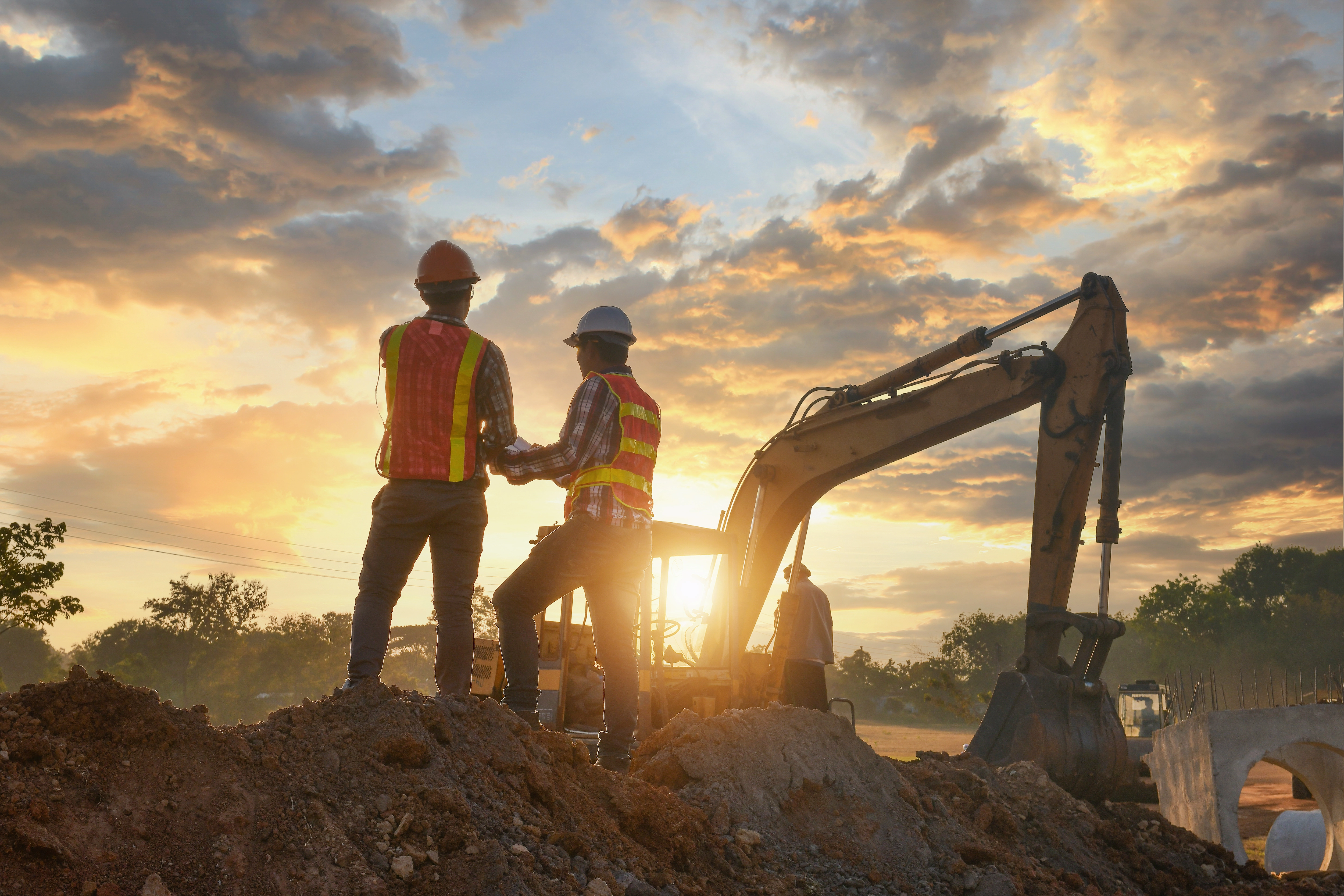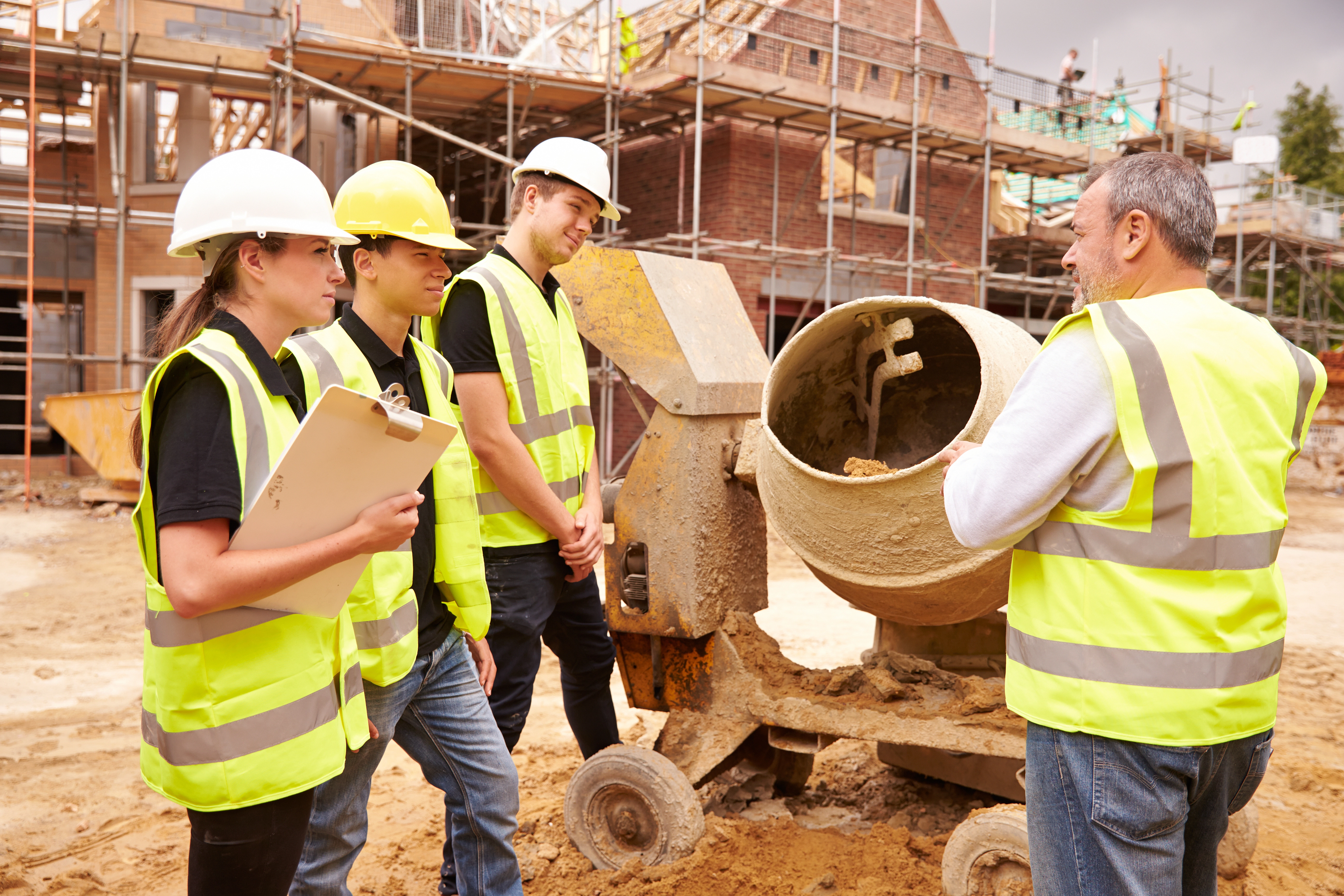Prioritizing Worker Safety in a Growing Construction Industry

The construction industry, known for its project-based structure and inherent risks, holds a prominent position in facing workplace hazards and injuries. As reported by the U.S. Bureau of Labor Statistics (BLS), a substantial 5,486 fatal work-related injuries and 2,804,200 non-fatal work injuries were recorded by December 29, 2023, marking a 5.7-percent increase from the previous year. Shockingly, a worker succumbed to a work-related injury every 96 minutes in 2022.
Navigating the Challenges
The industry's fragmented landscape, coupled with persistent change and uncertainty, necessitates specialized expertise and proactive strategies. Amidst the array of risks, the paramount concern is worker safety, with potential accidents carrying severe consequences. To address this, construction organizations must prioritize implementing stringent safety protocols:
- Initiatives for Construction Safety Training: Organizations must dedicate resources to conduct safety trainings for workers on potential hazards and essential preventative measures.
- Utilization of Personal Protective Equipment (PPE): Adherence to PPE, including hard hats, safety goggles, and reflective vests, is crucial for guaranteeing the well-being of workers.
- Enforcement of Safety Protocols and Regulations: Governments and construction organizations are instituting stringent safety protocols and regulations to enforce adherence and mitigate risks.
- Routine Inspections and Audits: Regular examinations and audits need to be carried out to pinpoint potential hazards. Proactive identification ensures that safety measures can be implemented timely to prevent potential risks.
The Grim Reality of Construction Industry Injuries
Undoubtedly, the construction sector is one of the riskiest industries, highlighted by the alarming number of fatal and non-fatal work injuries reported by the BLS. The escalating statistics underscore the urgent need for a comprehensive approach to mitigate risks and safeguard the well-being of construction workers.
Identifying the Root Causes
Research reveals that a significant proportion of work-related injuries and fatalities result from a failure to adhere to safety rules and programs. Heinrich's groundbreaking study in 1931 emphasized the sequence of factors, including worker mistakes and unsafe behavior, as primary contributors to accidents. Recent studies support the idea that inadequate training is a pivotal factor in accidents, prompting regulatory bodies such as the Occupational Health and Safety Administration (OSHA) to establish regulations. HAZWOPER OSHA Training provides the necessary training to regulate worker behavior and ensure workplace safety.
How to Improve Safety at Construction Sites?
There are several things that construction organizations can do to improve safety on their job sites. These include:

Implementing a Safety Program: Every construction site should have a safety program in place. It should include policies and procedures for identifying and mitigating hazards, initiatives to providing safety training to workers, and SOPs to investigate and document workplace incidents.

Providing Safety Training: All workers should be trained on the hazards of their jobs and how to stay safe. Training should be ongoing and cover topics such as fall protection, electrical safety, and working with hazardous materials.

Enforcing Safety Rules: It is important to have safety rules in place and to enforce them consistently. Workers who violate safety rules should be disciplined.

Providing Personal Protective Equipment (PPE): Workers should be provided with the appropriate PPE for their jobs, such as hard hats, safety glasses, respirators, and fall protection equipment.

Conducting Safety Inspections: Regular safety inspections should be conducted to identify potential hazards and ensure that safety rules are being followed.
The Role of Safety Training in Accident Prevention
Construction safety goes beyond legal obligation; it's a moral imperative. Protecting workers and the public isn't just the right thing to do, it also yields tangible rewards: fewer accidents, a stronger reputation, boosted productivity, and regulatory compliance. Let's build a culture of safety, brick by brick, through continuous training and strict adherence to safety standards:
- Leadership from the Top: True commitment starts with executives, allocating resources, training, and unwavering support.
- Empowering Knowledge: Equip workers with comprehensive training on hazards, protocols, and proper PPE use. Regular briefings keep safety top-of-mind.
- Open Communication Channels: Foster a safe space for reporting hazards, raising concerns, and sharing safety information. Active employee involvement strengthens defenses.
- Vigilance through Inspections: Regular checks by internal and external auditors identify and address potential issues before they become problems.
- Turning Awareness into Action: Train workers to recognize hazards and report them promptly. A proactive approach prevents incidents and saves lives.
By prioritizing these elements, we can transform construction sites into bastions of safety, where everyone goes home healthy and whole.
Benefits of Implementing Safer Construction Practices
Implementing safer construction practices offers a multitude of advantages for both workers and employers, including reduced workplace injuries, improved productivity, lower insurance costs, and enhanced reputation.
- A decrease in injuries and fatalities results in a more motivated and productive workforce.
- Reduction in legal liabilities and costs related to accidents, insurance, and workers' compensation.
- Companies that prioritize safety enjoy a positive brand image and an enhanced reputation.
Factors Contributing to the Success of Safety Training
Understanding the factors contributing to the success of safety training programs is crucial. Worker perceptions play a pivotal role, with studies highlighting the importance of observing trainees' attitudes toward safety training. Critical factors ensuring the effectiveness of safety training programs include leadership commitment, organizational support, resource allocation, and specialized training providers such as HAZWOPER OSHA Training LLC.
Innovations in Construction Safety
The horizon of construction safety is brimming with opportunities for significant advancements. Here are some intriguing possibilities that await:
- Augmented Reality (AR) and Virtual Reality (VR):
AR and VR technologies have the potential to revolutionize safety training by creating lifelike simulations of actual construction scenarios. Workers can immerse themselves in potentially risky situations, gaining valuable experience on how to respond effectively. Moreover, these technologies can be applied for on-site safety inspections, allowing inspectors to identify concealed hazards without physically venturing into dangerous areas. - Artificial Intelligence (AI) and Machine Learning:
AI algorithms possess the capability to analyze extensive construction data, identify patterns and predict potential safety hazards. Machine learning systems continuously evolve through the assimilation of past incident data, facilitating proactive risk management and preventive measures. These technologies can play a pivotal role in optimizing safety protocols based on real-time data. - Off-Site Construction and Modularization:
The adoption of off-site construction and modularization diminishes the reliance on on-site labor, thereby minimizing workers' exposure to hazardous environments. Prefabricated components can be assembled away from the construction site, ensuring compliance with quality and safety standards before delivery.
Looking ahead, the integration of technology into construction safety holds vast potential.
- The imperative nature of construction safety advancements to safeguard workers and the public.
- Technological integration involving wearables, drones, Building Information Modeling (BIM), and the Internet of Things (IoT).
By wholeheartedly embracing these advancements and incorporating them into construction practices, we can establish a safer working environment and diminish the occurrence of incidents in the construction industry. Always remember that prioritizing safety is paramount, and staying abreast of the latest technological developments ensures a promising future for construction safety.
Adapting to the Future
As the construction industry evolves, prioritizing worker safety becomes increasingly imperative. Safety training programs emerge as a linchpin in accident prevention, influencing worker behavior, perceptions, and the overall safety climate. By addressing factors like management support, effective communication, and organizational commitment, construction firms can cultivate and implement successful safety training programs, contributing not only to the protection of lives but also to the long-term success and sustainability of the construction industry.
References:
TED: The Economics Daily. Website. https://www.bls.gov/opub/ted/2023/fatal-work-injuries-up-in-2022.htm



